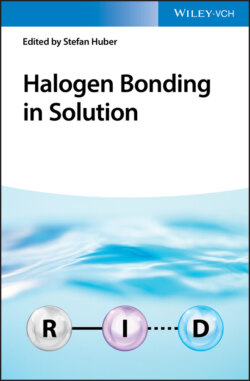Читать книгу Halogen Bonding in Solution - Группа авторов - Страница 33
1.4.8 Biological Computation of Halogen Bonding
ОглавлениеUtilizing the halogen bond in biological settings is still novel. Currently, researchers are evaluating the influence of halogen bonding in protein stability, substrate binding, and drug design. Although nature seldom employs the halogen bond [158], medicinal chemists have found that the hydrophobicity of the halogen and directionality of the halogen bond could improve drug delivery and specificity. Drug design is time and cost intensive. To reduce this, medicinal chemists frequently turn to computational chemistry to identify target systems. However, specialized tools for modeling the halogen bond are still rare in the field.
Ho has been at the forefront of studying halogen bonding in biochemical systems. Using experiments, computations, and PDB searches, his group revealed that halogen bonds can stabilize ligand binding and molecular folding in proteins and nucleic acids [159]. An initial survey of the PDB found 113 different interactions when searching for short halogen‐Lewis base interactions. To date, more than 790 structures featuring the halogen bond in the PDB have been found [160]. A review by Ho et al. has also summarized current computational designs for halogen bonding drug candidates [161]. Using the structure of a protein and its binding pocket, their methodology identifies possible halogen bond acceptors within the pocket and predicts optimal positions to place the halogen bond donor. This tactic allows medicinal chemists to predict which donor to incorporate and where to place it on a substrate. Hobza has used another approach by employing the semiempirical family of PM6 functions to make halogen bond computations accessible without using computationally expensive quantum mechanical (QM) calculations [162,163]. Using this method, they demonstrated that reasonable modeling can be achieved using lower levels of theory on non‐halogen bonding components.
Other methodologies for studying the halogen bond in biology are effective and highly utilized. For example, Boeckler developed an evaluation tool called XBScore, which rates halogen bond interactions in proteins using QM/molecular mechanics (MM) calculations [164]. QM/MM uses computationally cheap MM to model most of the protein and expensive QM to model the binding site and halogen bonding substrate [165]. In comparison, other techniques like optimized potentials for liquid simulations‐all atoms (OPLS‐AA) [166] or assisted model building with energy refinement (AMBER) [167] have used a positive extra point approach by adding a pseudoatom at the halogen atom surface to inexpensively simulate a σ‐hole. Ho further developed these force field systems by deriving MM/MD equations specifically for the halogen bond [168]. The above computational techniques highlight how the ingenuity of the chemists has overcome limitations of computational power to provide reasonable predictions in a timely fashion.
